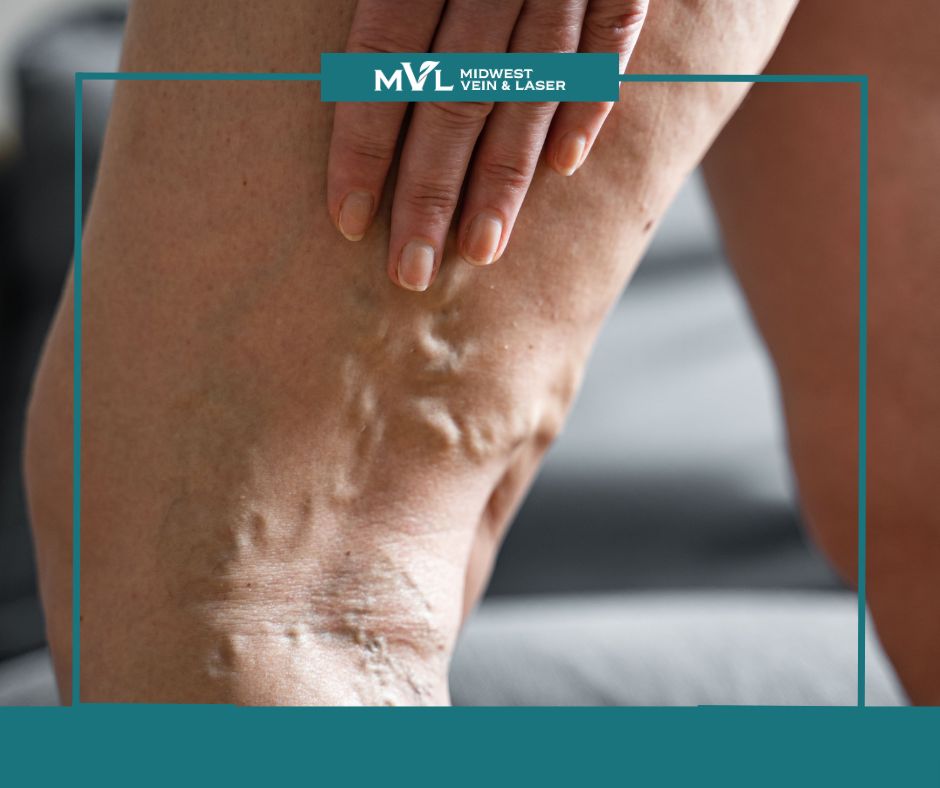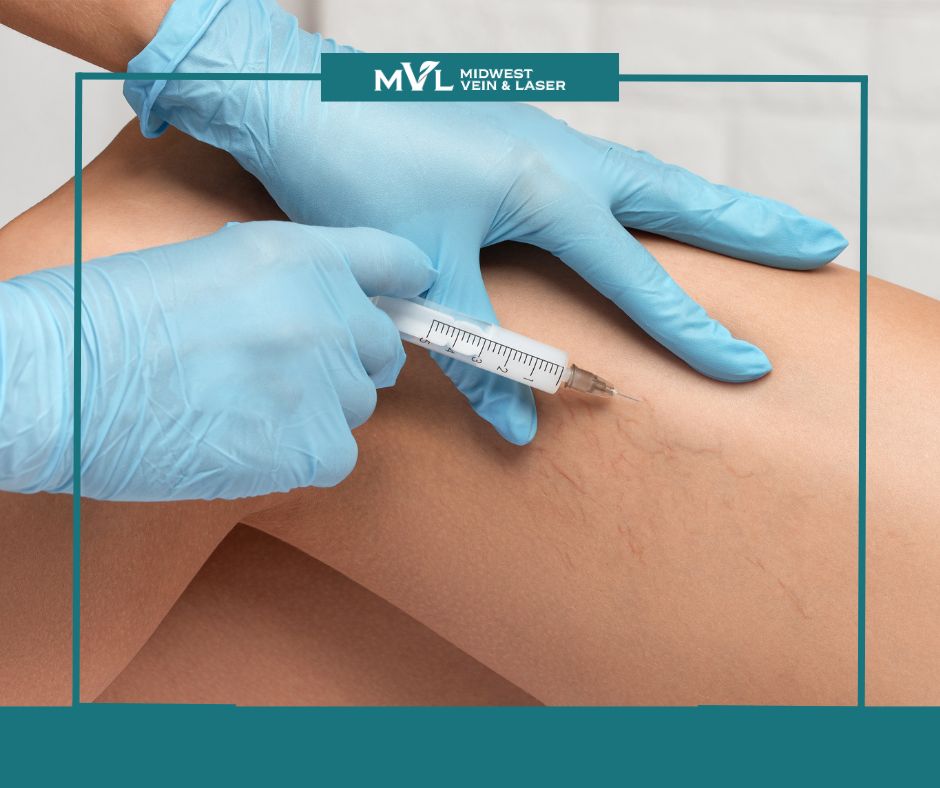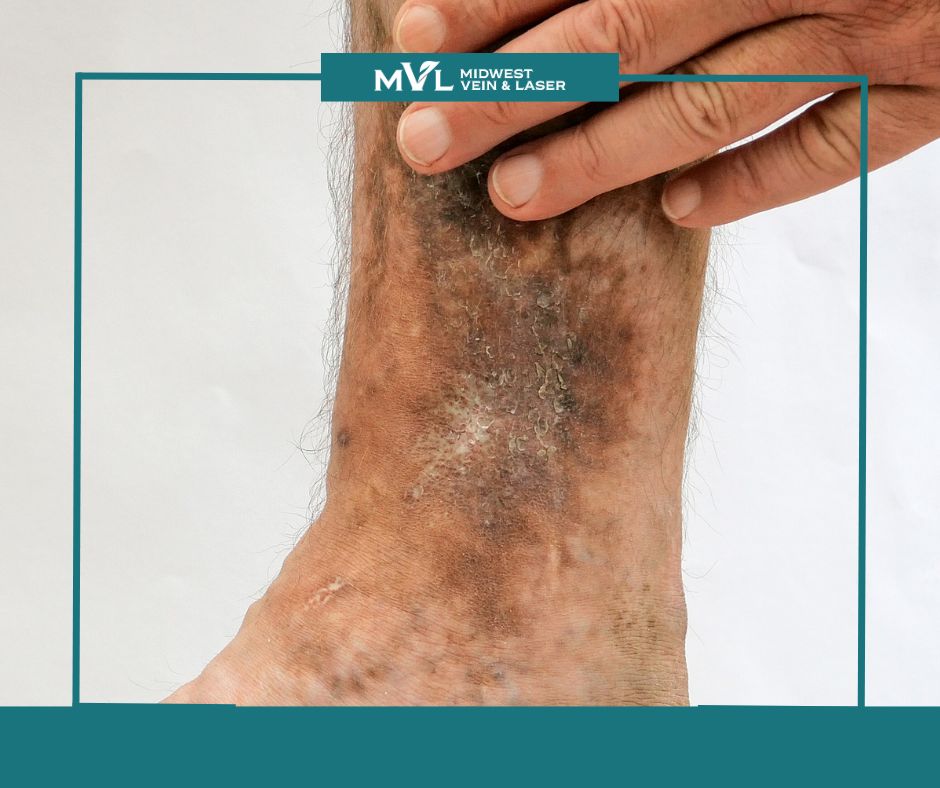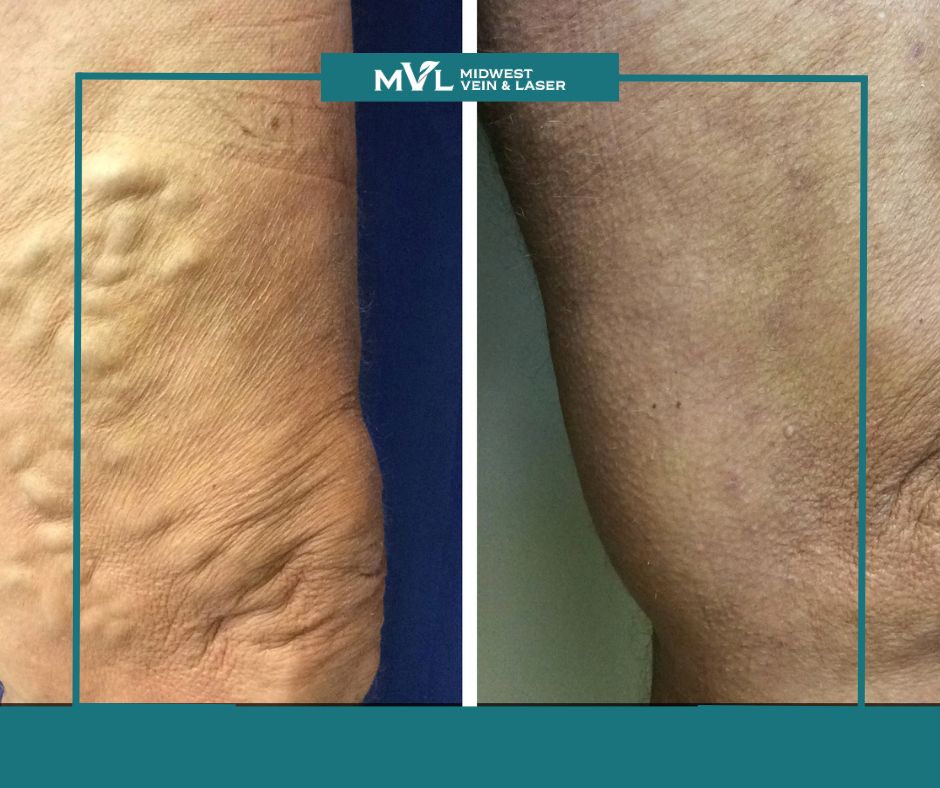Venous
Stasis Ulcers
At MVL we specialize in advanced vein treatments to heal venous stasis ulcers, restore circulation, and prevent recurrence.
Take the first step toward healing your venous stasis ulcer and call us today to schedule your complimentary consultation at 800-515-4295.
Kandy Hammond RN BSN MBA/HCM
— Dr. Sukir Sinnathamby, MD
Patient Guide
Venous Stasis Ulcers
What is a Venous Stasis Ulcer?
Venous stasis ulcers develop due to chronic venous insufficiency (CVI), a condition where weakened vein valves prevent proper blood flow, leading to fluid buildup, swelling, and eventually, open wounds.
At Midwest Vein & Laser, our treatment plan focuses on two key aspects:
- Healing the existing ulcer with advanced wound care.
- Treating the underlying vein disease to prevent recurrence.
By combining minimally invasive vein treatments with targeted wound management, we promote faster healing and long-term prevention of ulcers.
What Does Venous Stasis Ulcer Treatment Address?
- Skin discoloration and thickening in the affected area.
- Leg swelling and heaviness due to fluid retention.
- Pain, itching, or burning around the ulcer.
- Drainage or infection if the ulcer worsens.
- Treating venous ulcers is crucial to avoid serious complications like infections, deep tissue damage, or worsening circulation issues.
Call 937-281-0200 today to schedule your Varithena consultation and take the first step toward healthier, smoother legs!
How Does Venous Stasis Ulcer Treatment Work?
The first step in treating venous stasis ulcers is assessing the severity of the wound and identifying the underlying circulation issues. At Midwest Vein & Laser, we use advanced diagnostic imaging to determine the best course of treatment.
For ulcer healing, we use specialized wound care techniques, including:
- Medical dressings and compression therapy to promote tissue repair.
- Debridement (removal of dead tissue) to support healthy skin regrowth.
- Topical and oral medications if infection is present.
To address the underlying venous insufficiency, we may recommend minimally invasive vein treatments, such as:
- Endovenous Laser Ablation (EVLA) – Uses laser energy to close diseased veins, improving circulation.
- Sclerotherapy – Injections that collapse malfunctioning veins.
- Varithena Foam Therapy – A targeted treatment that helps close large varicose veins contributing to venous ulcers.
By treating both the ulcer and the vein disease, we significantly improve healing time and reduce the risk of recurrence.
What to Expect During Treatment
The treatment process depends on the severity of the venous ulcer and the extent of vein disease.
- For wound healing, medical dressings and compression therapy will be applied to promote tissue regeneration and reduce swelling. Some patients may require debridement (removal of dead tissue) to encourage healthy skin growth.
- If underlying vein disease is present, a minimally invasive vein treatment will be performed. These procedures typically take 30-60 minutes and require no downtime, allowing patients to return to normal activities immediately.
- Patients often begin to see improvement within weeks, with full ulcer healing occurring over several months, depending on the severity.
Tips for Recovery & Best Results
Proper aftercare is essential for long-lasting results and ulcer prevention.
To optimize healing and prevent recurrence:
- Wear compression stockings daily to improve circulation and reduce swelling.
- Keep the wound clean and follow medical dressing instructions.
- Elevate your legs regularly to minimize pressure and fluid buildup.
- Stay active with light walking to promote healthy blood flow.
- Maintain a healthy weight and diet to reduce stress on your veins.
Our team will provide ongoing guidance and follow-up care to ensure proper healing and long-term vein health.
Varithena FAQs
Yours questions answered.
How long does it take for a venous ulcer to heal?
Healing time varies depending on the ulcer’s severity and whether underlying vein disease is treated. Most patients see significant improvement within weeks, with full healing in several months.
Will my venous ulcer come back after treatment?
Addressing both the ulcer and the underlying vein disease greatly reduces the risk of recurrence. Wearing compression stockings and maintaining healthy circulation also help prevent new ulcers from forming.
Is venous stasis ulcer treatment painful?
Minimally invasive vein treatments and wound care are well-tolerated with little to no discomfort. Some patients experience mild soreness after vein procedures, but this resolves quickly.
Does insurance cover venous stasis ulcer treatment?
Most insurance plans cover treatment when ulcers are associated with chronic venous insufficiency. Our team will assist you in verifying your benefits.
Look, Feel, & Live Better
Our Vein Services
The Value of MVL
Why Choose Us
in Business
Serving the community of Dayton, OH.
Treatments Provided
Over the last 48 years we have provided thousands of safe & effective treatments to our patients.
Combined Experience
The professional team at MVL is among the top in the nation.
Locations
Centerville & Vandalia convenient locations.








